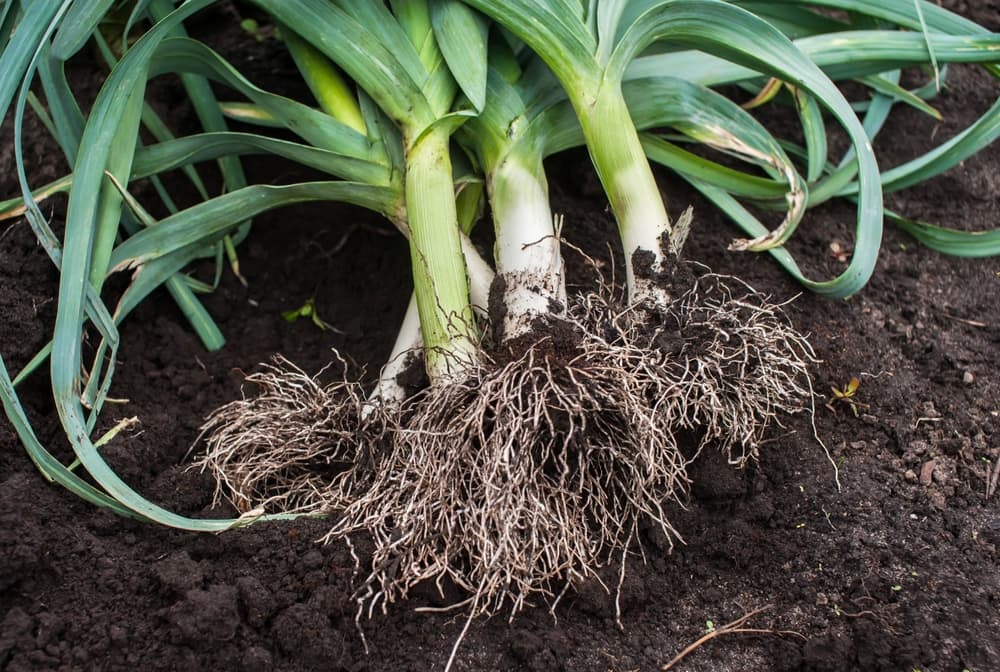Leeks Are Good For Harvesting From Late Summer To Mid Winter – Learn How In This Guide

VEGETABLES > LEEKS > HARVESTING

Elizabeth is a Permaculture Garden Designer, Sustainability Consultant and Professional Writer, working as an advocate for positive change. She graduated from the University of St. Andrews with an MA in English and Philosophy and obtained a Diploma in Applied Permaculture Design from the Permaculture Association.
Reviewed By COLIN SKELLY

Colin is a Horticulturist and Horticultural Consultant with experience in a range of practical and managerial roles across heritage, commercial and public horticulture. He holds the Royal Horticultural Society’s Master of Horticulture award and has a particular interest in horticultural ecology and naturalistic planting for habitat and climate resilience.
LEEK GUIDES
Companion Plants
Growing From Seed
Harvesting
Transplanting
Winter Growing
Leeks are a crop that you could harvest from late summer right through to the following February if you choose the right varieties and sow or plant out at the right times.
This is a great autumn and winter vegetable to grow in your garden.
When and how to harvest leeks are important things to understand in order to grow them in your garden.
First of all, to get a harvest of leeks, sow your seeds in winter or spring.
After around 6 months, you can harvest your leeks by simply using a garden fork to pry the vegetables up from the ground.
| Difficulty | Easy |
| Equipment Required | Garden fork or another similar gardening tool |
| When To Harvest | August to December |
When To Harvest Leeks
You can expect to harvest leeks from late August onwards, around 6 months from planting.
Most gardeners (myself included) will leave leeks in the garden until they have been exposed to frosts, as this can improve their flavour.
When you will harvest leeks will dictate which varieties it will be best to grow.

Some are best for late summer or autumn harvesting, whilst others are great for mid-winter.
Some are even ideal for seeing you through until spring.
Leeks are then usually left in the ground and harvested as needed from October through to December.
It is best to leave leeks in the ground until they are required because they do not keep long fresh in storage.
Leeks are typically hardy in the UK and can cope with whatever weather conditions we typically experience – including low temperatures, windy and wet conditions, and snow.

In fact, snow can sometimes be beneficial, acting as a blanket to protect the roots of the plants.
If you live in a cold winter area and the ground freezes solid over the winter, you can consider lifting and heeling them back into the soil in a warmer area where they can be retrieved more easily as needed.
You can also use a mulch of straw or dried leaves to help reduce ground freezing.
How To Harvest Leeks
When harvesting leeks, use a fork or other gardening tool to pry them up.
Don’t try to pull them up by hand or they may break off below the ground.
Leeks can get quite stuck in the growing medium, especially if your soil has a high clay content, so easing them out gently so that they do not break is the way to go.

“I use a garden fork to gently ease them out of the ground and then use a hand fork to carefully knock away soil from the roots,” explains Horticultural Consultant Colin Skelly.
“You don’t want soil entering the top of the leek as this will make washing them far more arduous.
“Try to harvest in drier weather if possible as this will mean less soil sticking to the leek.”
Once you harvest your leeks, whether you do so all at once or little by little over the coldest part of the year, you should find plenty of ways to cook with them, as this versatile vegetable works very well in a wide range of recipes.
Storing Your Leeks
Most of the time, you should not experience pest or disease problems when keeping leeks in the garden over winter to be harvested slowly over time.
However, if you do find that you are having issues with winter damage, then you might also consider covering your winter crop with row covers or cloches to protect them.

However, if you prefer or would like to grow something else in the space in your garden, you can harvest a number of leeks all at once and preserve them by chopping them up and freezing them for later use.
Alternatively, you can store leeks in damp soil or sand in a cool cellar or pantry for a few months.
They will, as mentioned above, typically store best in the ground outside where possible until it is time to harvest.
